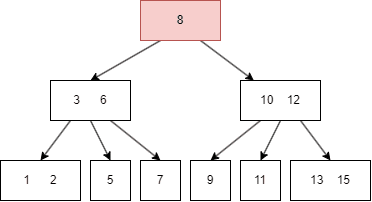Anyone who’s ever used a keyboard trying to get stuff done on a computer should know the seven foundational data structures of computer science: arrays, linked lists, hash tables, stacks, queues, graphs, and trees. They’re the building blocks, the ABCs of how we organize data.
If you somehow missed the basic rundown on how computers actually work, here’s the quick version: a data structure is just a way to organize data so computer can efficiently create, read, update, and delete it (CRUD, for the cool kids).
- An array is like a row of numbered cubbies.
- A linked list is a treasure map where each clue leads to the next.
- A hash table is like a locker with your name on it.
- A stack is like a stack of books.
- A queue is the line of kids at the cafeteria.
- A graph is a spiderweb of connections.
- And a tree is, well, like a tree — branches and leaves.
Programming is all about solving problems. And for many developers, the classic data structures are well-trodden paths, tools we’ve used so often we reach for them without thinking. But what happens when things get messy?
When speed, size, or structure push past the limits of the classics, things start to break down. That’s when you step into a world of specialized data structures built for edge cases, scale, and the nasty problems real systems throw at you.
Here are five data structures that shine when things get weird:
- #1–The B-Tree: Built for Big Data
- #2–The Radix Tree: Fast Lookups with Shared Prefixes
- #3–The Rope: Efficient Text Editing at Scale
- #4–The Bloom Filter: Probabilistic Lookup at Scale
- #5–Cuckoo Hashing: Constant-Time Insertion with a Twist
#1–The B-Tree: Built for Big Data
Remember the thrill of implementing your first binary search tree? That moment your algorithm’s time complexity stopped going brrrr (O(N²)) and gracefully glided into a much faster O(log N)? Pure magic.
But binary search trees have a hidden flaw: each node can only have two children. That makes them grow deep, fast. In memory, that’s usually fine. But on disk every extra level means another slow read. And when you’re dealing with massive datasets, that depth becomes a real problem.
That’s where B-Trees (and their popular cousin, the B+ Tree) come in. Originally developed at Boeing, B-Trees solve the depth problem by allowing each node to have many children — sometimes dozens or even hundreds. That keeps the tree wide and shallow, which means fewer disk reads.
Inside each node of a B-Tree, there’s a list of sorted keys. These keys help you decide which path to follow next, like signs on a highway. Instead of just choosing between “left” and “right” like in a binary tree, you scan through the keys to figure out which branch to follow. At the bottom are the leaf nodes, which contain the actual data (or pointers to it). The result: a structure that handles huge datasets with speed and efficiency.
Think of it like a super-efficient filing system for huge datasets. By letting each node branch out in many directions, B-Trees stay wide and shallow — meaning fewer levels to search through, and far fewer slow disk reads. That’s why they power most file systems and databases today. Simple idea, massive impact.
#2–The Radix Tree: Fast Lookups with Shared Prefixes
The internet is huge, with billions of IP addresses. Ever wondered how your computer can figure out the right path so quickly? That’s where the Radix Tree comes in (also called a Patricia trie or crit-bit tree). It’s built to handle keys that share common beginnings — like IP addresses or words in a dictionary.
Instead of having nodes with only one child, a Radix Tree merges those nodes with their parent. This makes the tree much smaller, especially when many keys share the same starting sequence.
For example, a simple trie for words like “CAT”, “CAR”, and “CUP” would have separate nodes for each letter. A Radix Tree would combine the letters where possible — so “C” and “A” might merge into a single branch labeled “CA” because both “CAT” and “CAR” share that prefix.
This compression makes Radix Trees very efficient for routing tables and any system that needs quick lookups based on prefixes. They’re less suited for random or very different strings, but for prefix searches, they’re highly effective.
#3–The Rope: Efficient Text Editing at Scale
Ever tried editing a huge text file — like hundreds of megabytes — and wondered why your editor doesn’t choke? That’s thanks to data structures like the Rope.
Instead of storing a massive string as one continuous, unwieldy block of memory (which makes insertions and deletions a nightmare of data shuffling), a Rope splits the text into smaller pieces. These chunks are then organized into a binary tree.
When you insert text in the middle of a document, a Rope doesn’t need to shuffle everything that comes after. It just splits the relevant chunk, drops in a new piece, and rebalances the tree.
The internal nodes of this tree don’t store characters themselves; instead, they store the length of the string in their left subtree. This allows for incredibly fast concatenation, splitting, and substring operations.
#4–The Bloom Filter: Probabilistic Lookup at Scale
Sometimes, the smartest move isn’t finding something — it’s ruling it out quickly. That’s what Bloom Filters are built for.
A Bloom Filter is a space-efficient, probabilistic data structure that answers a simple question: “Is this item definitely not in the set?” If it says “no,” you can trust it completely. But if it says “maybe,” it might be there — or it might be a false positive. The key: it never gives false negatives.
It works by hashing each added item with several different hash functions. Each result points to a bit in a fixed-size array, which gets set to 1. To check for membership, you hash the item again. If any of the corresponding bits are 0, the item definitely isn’t there. If all are 1, it might be.
Think of it like a fast-moving security scanner at the airport. It can instantly flag bags that are definitely empty — no need to open them. But if something might be inside, it sends the bag for manual inspection. You save tons of time by skipping unnecessary checks, even if a few false alarms slip through. That’s the power of a Bloom Filter: fast, lightweight, and perfect for saying “nope, not here” at massive scale.
#5–Cuckoo Hashing: Constant-Time Insertion with a Twist
Nature is full of weird inspiration. Take the cuckoo bird, famous for sneaking into another bird’s nest, laying its own egg, and tricking the host into raising its chick. This rather ruthless survival strategy inspired Cuckoo Hashing.
Here’s how it works: each key has two or more possible spots in the table, chosen by different hash functions. When you insert a key, you check its first spot. If it’s empty, you’re done. If it’s taken, the new key kicks out the existing key (the “cuckoo” move). The kicked-out key then tries its alternate spot, possibly kicking out another key, and this continues as needed.
If this chain of evictions goes too long or loops, the whole table gets rebuilt with new hash functions.
The payoff? Super-fast lookups, because every key can only be in one of a few fixed places — no searching through long chains.
Beyond the Textbook: The Ingenuity of Data Structures
These aren’t just clever tricks. From the B-Trees organizing the world’s data to Bloom Filters speeding up your web browsing, these advanced data structures are a testament to the clever ways programmers have bent and shaped data to solve really hard problems.
They remind us that sometimes, the most elegant solution isn’t about more processing power, but a fundamentally smarter way of organizing the information itself. So, the next time a simple array or list isn’t cutting it, remember there’s a whole world of ingenious structures waiting to be explored.
Want to hear from me more often?
👉 Connect with me on LinkedIn!
I share daily actionable insights, tips, and updates to help you avoid costly mistakes and stay ahead in the AI world. Follow me here:
Are you a tech professional looking to grow your audience?
👉 Don’t miss my newsletter!
My Tech Audience Accelerator is packed with actionable copywriting and audience building strategies that have helped hundreds of professionals stand out and accelerate their growth. Subscribe now to stay in the loop.





















